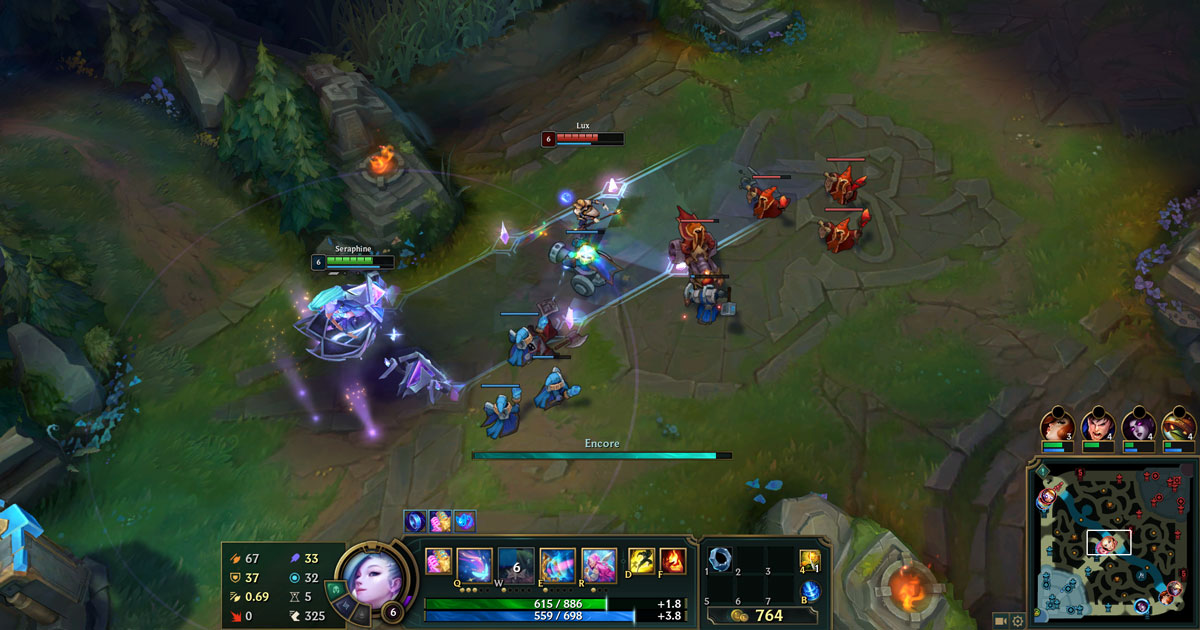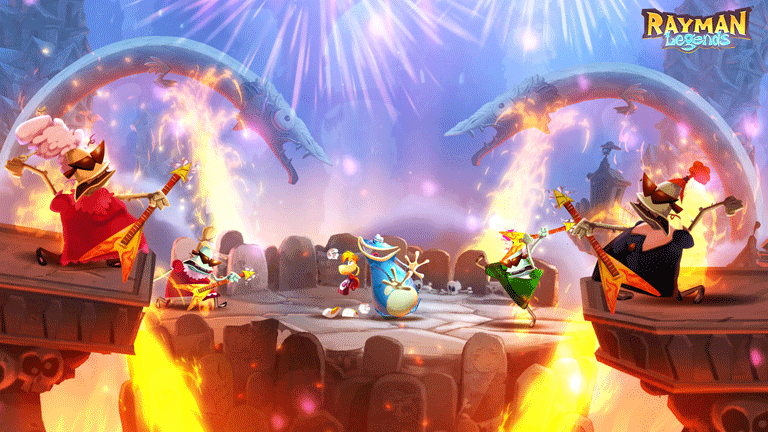By David Greenspan, Senior Director of Legal and Business Affairs, Namco Bandai Games America (USA), S. Gregory Boyd, Partner and Chairman of Interactive Entertainment Group, Frankfurt Kurnit Klein & Selz PC (USA), Jas Purewal, Senior Associate, Osborne Clarke (USA)
Since the launch of the first mainstream game console by Nintendo in 1985, video games have become a global industry worth an estimated US$65 billion. It is the fastest growing sector of the entertainment industry and an important driver of economic growth, creating millions of jobs, generating much-needed tax revenues and offering exciting opportunities for talented creators and engineers from all corners of the globe.
Unlike other creative industries, video games draw on the worlds of both technology and creativity. They fuse cutting-edge technology and imaginative artistic expression. The computer code underlying a game transforms ideas into rich expressions of visual art which come alive on a range of devices – consoles, computers, tablets and smartphones.

A global phenomenon
The cultural impact of the industry is being felt across the world. It has become a global phenomenon with recent major successes from studios in countries as diverse as Belarus (Wargaming.net), China (with Tencent and Perfect World) and Finland (with Supercell and Rovio).
Over the last 20 years, the demographics of players have changed dramatically. Gone are the days when the average video game player was a teenage boy playing alone and firing away at bad guys in front of a television screen at home. Today, the average video game player will be thirty something, as likely to be female as male, will play on multiple devices and can come from anywhere in the world.
Dramatic changes, exciting opportunities
Advances in technology have also dramatically changed the games themselves, spawning a wide range of new formats, stories, and genres. Games are in fact as varied as the imagination of the developers, featuring realistic graphics, voice-overs, use of motion capture technology giving characters fluid movements, music equal to film scores and original story lines. The development and marketing budgets for major game titles often rival those of the movie industry.
While still dominated by multi-billion dollar hardware companies such as Sony, Nintendo, Microsoft, Apple, and Samsung and publishers such as Activision, Electronic Arts (EA) and King (mobile), new technologies have opened up the gaming industry to many new independent developers. WIPO’s recent publication, Mastering the Game: Business and Legal Issues for Video Game Developers provides established developers as well as new market entrants with information about how to develop a proactive strategy to secure the IP rights in their work for its distribution and use. The guide explores, in very practical terms, the range of legal and business issues facing developers at various stages of the process of developing a game and transforming it from a concept into a marketable product. It further underlines the importance of negotiating contracts to define who owns the IP rights in a work.
While many have cashed in on the public’s seemingly insatiable appetite for video games, and there is still huge potential for growth, there are also significant risks and uncertainties. These are related, in particular, to the rising costs facing the industry – a major flop can severely impact a publisher’s or developer’s business - and the need to keep pace with constantly evolving tastes in terms of the games consumers want to play, how they want to play them and how they want to purchase them.
The Lord of the Rings and derivative works
Acquiring the right to make a derivative work – a new work derived from an existing copyright work can be a complex process.
To make The Lord of the Rings trilogy, Peter Jackson had to obtain a license from the Saul Zaentz Company which holds movie rights to Tolkien’s work. As a derivative work the trilogy was copyrightable as a new work and licensable in its own right.
In 2001, Electronic Arts (EA) developed the first Battle for Middle Earth game on the basis of a license from Peter Jackson films. Under this license EA could only produce game content, or a derivative work that came from the Jackson films. However, in 2005 while creating the sequel to Battle for Middle Earth and other Rings games, EA acquired a license to produce a game based on Tolkien’s published works. This opened up a great deal of new territory for creativity.
Just a few years ago, games (played on consoles) were sold mainly through retail outlets, and while physical console and computer sales still generate a substantial proportion of industry revenue, mobile gaming (games played using mobile devices) has become the fastest growing sector of the industry. Digital distribution is expanding as a result of lower entry barriers and costs. At the same time, the marketplace is becoming ever more crowded, making it difficult to distinguish one game from another.
The video game industry is constantly evolving creatively (how a game looks), technologically (the hardware and software that bring the games to life) and commercially (the business models used distribute games to consumers). With such innovations, come new challenges.
Defining the rules of the game
The core legal issues facing all entities involved in the video game ecosystem - developers, financiers, publishers and distributors - focus on ensuring that appropriate legal arrangements are in place to enable the development, financing and distribution of games. While questions of privacy and data security, content regulation and monetization are key considerations (and are covered in the publication), developing a proactive IP strategy to secure appropriate IP rights is essential to the success of a developer’s enterprise.
Game Project and IP Law
| Copyright | Trade Secret | Trademark | Patent |
|---|---|---|---|
| Music | Customer mailing lists | Company name | Hardware technical solutions |
| Code | Pricing information | Company logo | Inventive game play or game design elements |
| Story | Publisher contacts | Game title | Technical innovations such as software, networking or database design |
| Characters | Middleware contacts | Game subtitle | |
| Art | Developer contacts | ||
| Box design | In-house development tools | ||
| Website design | Deal terms |
IP is the lifeblood of the industry. IP rights are associated both with the tools used to develop games and the content included in a game. For example, copyright safeguards the creative and artistic expression that goes into the software (the code), the artwork and the sound (and music) of a game. If developers want to create a new work on the basis of an existing copyrighted work, a so-called derivative, then they must first secure the appropriate licenses from the copyright holders. An example of a derivative work is Shrek the game which was based on Shrek the film. The process can also work the other way. When filmmakers want to develop a film on the basis of the story line of a successful game they too must secure rights from the right holders of the original work, for example, Doom the movie was based on Doom the game.
Trademarks protect the names and logos associated with a game and its characters and can be used to set a company and its games apart from others in the minds of consumers; patents protect the next generation hardware (and are particularly important for hardware manufacturers) or technical solutions as well as the inventive game play or design elements; and trade secrets can be used to safeguard a company’s competitive advantage by protecting confidential business information, such as contacts or subscriber mailing list data, or an in-house development tool. Without the appropriate rights and licensing agreements in place, developers may find their game cannot be distributed; they may be unable to fully leverage the value of their work. What developers own is IP; what they sell (through licensing deals) is IP. In fact, all they have is IP, so they need to protect it.
The pace of change within the gaming industry itself can be a challenge insofar as the laws that are currently in place to safeguard and encourage innovation and creativity may lag behind and may not always provide an adequate solution to an emerging or unforeseen situation. These challenges are further compounded by the lack of harmonization of the laws applicable to the video game industry around the world.

Changing patterns of ownership
Costs of development can vary considerably depending on the platform, artwork, game play complexity and whether any underlying IP is licensed in, but commonly run into the millions of dollars for console and online games, and the hundreds of millions of dollars for blockbuster games. Traditionally, it was the role of publishers to secure financing for game development, but with the emergence of new forms of distribution and alternate funding mechanisms, such as crowd-funding, the roles of publishers and developers are evolving. As a consequence, the IP rights that typically vested with publishers may now be shared with a publisher or owned by a developer or an investment vehicle. These changing patterns of ownership further highlight how important it is for developers to become IP aware.
From the very beginning of the industry, developers have incorporated licensed material into their games in an endeavor, not only to stand out in the crowd, but also to attract a wider audience through the use of recognizable brands and technologies to create more realistic game play.
A basic understanding of IP allows developers to more effectively tackle the range of licensing issues arising across the value chain with licensors whether in relation to securing middleware (software that is integrated into the game engine to handle specialized elements, such as graphics or networking), talent, or external IP licenses relating to, for example, music, sports or film licensing which have become important areas of interest.
A familiarity with the range of legal and business issues explored in Mastering the Game will help developers pre-empt problems, avoid costly mistakes and provide a better understanding of the major terms of various industry agreements.
Eye-catching facts about the growth of video games
Industry statistics reflect the industry’s staggering growth and growing popularity.
- Within 24 hours of its release in September 2013, Grand Theft Auto 5 earned more than US$800 million dollars and sold more than 11 million copies worldwide. Within a record-breaking three days, sales hit US$1 billion dollars. In comparison, the biggest movie hit of the summer of 2013, Iron Man 3 brought in worldwide sales of US$372 million in its first weekend.
- Within 24 hours of the release of Microsoft’s Xbox One and Sony’s PlayStation 4 consoles in November 2013, over 1 million units of each were sold. Within 18 days, sales for each console hit the two million mark.
- Online revenue for video games including digital delivery and subscriptions increased to US$24 billion in 2012. Similarly, mobile gaming generated between US$8 to 12 billion in revenue in 2012 with game apps, dominating the iOS and Google Play app stores.
Categories of Video Games
| Console | Personal computer (PC) | Mobile/Casual |
|---|---|---|
| Run on dedicated hardware | Run on Windows, Mac or Linux | Run on tablets and phones |
| Expensive to develop | Wide variety in terms of cost and genre | Less expensive to develop |
| Wide variety of genre | No single gatekeeper for platform | Social and casual games |
| System controlled by IP owners | Majority of sales through digital | Largest number of potential players |
| Box product and digital but dominated by box sales |



